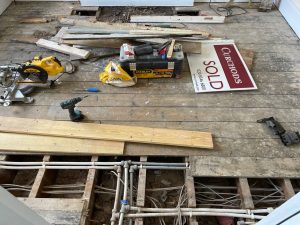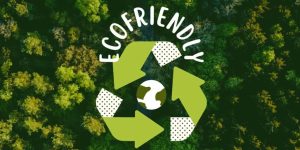The Best Floor Sanding Practices for Allergy Sufferers

For allergy sufferers, maintaining a clean and dust-free environment is crucial. Floor sanding, while essential for maintaining beautiful hardwood floors, can release a significant amount of dust and allergens. In this guide, we will explore the best floor sanding practices to help allergy sufferers keep their London homes healthy and safe during the sanding process.
Understanding the Risks
During floor sanding, fine dust particles are released into the air, which can trigger allergies and respiratory issues. This dust can linger in the home long after the sanding is completed if not properly managed. Therefore, implementing effective dust control measures is essential.
Preparation is Key

1. Choose the Right Equipment
Using the right equipment can significantly reduce dust levels. Opt for sanders with built-in dust collection systems or HEPA (High-Efficiency Particulate Air) filters. These systems capture most of the dust before it spreads throughout your home.
2. Seal Off the Area
Before starting the sanding process, seal off the work area from the rest of the house. Use plastic sheeting and painter’s tape to cover doorways, vents, and windows. This helps contain the dust within the work area, preventing it from spreading to other parts of your home.
3. Clear the Room
Remove all furniture, rugs, and decor from the room to be sanded. This makes the sanding process easier and ensures that these items don’t collect dust, which could later trigger allergies.
During Sanding

1. Use a Dust Mask
Wear a high-quality dust mask or respirator to protect yourself from inhaling fine dust particles. Ensure the mask fits snugly and is rated for fine dust filtration.
2. Ventilate the Area
Proper ventilation helps to disperse dust and keep the air clean. Open windows and use fans to direct dust outside. However, be mindful of the direction of the airflow to prevent dust from re-entering your home.
3. Employ Wet Sanding Techniques
Wet sanding can significantly reduce dust levels by using water to trap dust particles. Although this method requires more cleanup, it is highly effective in minimizing airborne dust. Ensure the floor can handle moisture before using this technique.
Post-Sanding Cleanup
1. Vacuum Thoroughly
After sanding, use a vacuum with a HEPA filter to clean up dust thoroughly. Vacuum the floor, walls, and any surfaces in the room to ensure all dust is removed. HEPA filters are essential as they trap tiny particles that other vacuums might miss.
2. Wipe Down Surfaces
Use a damp cloth to wipe down all surfaces, including windowsills, baseboards, and any remaining fixtures. This helps to capture any dust that has settled after vacuuming.
3. Clean HVAC Systems
If your HVAC system was running during sanding, replace the filters and clean the ducts to prevent dust from circulating throughout your home. Consider having a professional clean your HVAC system if extensive dust has accumulated.
Maintaining an Allergy-Friendly Home
After sanding, maintain an allergy-friendly environment with these tips:
- Regular Cleaning: Vacuum and dust your home regularly to prevent allergens from accumulating.
- Air Purifiers: Use air purifiers with HEPA filters to keep the air clean and free from allergens.
- Humidity Control: Maintain proper humidity levels to prevent mold and dust mites, which can exacerbate allergies.
Conclusion
By following these best practices for floor sanding, allergy sufferers can minimize exposure to dust and allergens, ensuring a healthier living environment in their London homes. Proper preparation, effective dust control, and thorough post-sanding cleanup are key to achieving a successful and allergy-friendly floor sanding project. For professional floor sanding services with a focus on health and safety, contact our experienced team today. We are committed to providing high-quality results while maintaining a clean and healthy home.






Expert Tips for Maintaining Sanded Floors
Sanding your wooden floors can breathe new life into your home, giving it a fresh,[Read more...]
Hardwood vs. Engineered Wood: Which is Better for Sanding?
When it comes to choosing the right flooring for your home, understanding the differences between[Read more...]
How to Maintain the Shine on Your Sanded Floors
How to Maintain the Shine on Your Sanded Floors Expert Tips for Keeping Your[Read more...]
The Benefits of Hiring a Local Floor Sanding Expert
The Benefits of Hiring a Local Floor Sanding Expert Enhancing Your London Home with[Read more...]
Cost Guide: How Much Does Floor Sanding in London Cost?
If you’re looking to rejuvenate your wooden floors and enhance the beauty of your home,[Read more...]
The Science Behind Floor Sanding: Understanding the Process
Floor sanding is more than just a cosmetic enhancement; it’s a precise process that involves[Read more...]
Floor sanding and renovation and installation services in Harlow
Harlow, located in Essex, is a thriving town with a rich history and a strong[Read more...]
Sep
How to Handle Heavy Furniture on Sanded Floors
How to Handle Heavy Furniture on Sanded Floors Protect your wooden floors from[Read more...]
Floor Sanding for Different Types of Wood: A Guide
Floor Sanding for Different Types of Wood: A Guide Ensure the Best Results for[Read more...]
How Floor Sanding Can Transform Your London Home
Living in London comes with the charm of historic architecture and classic interiors. However, maintaining[Read more...]